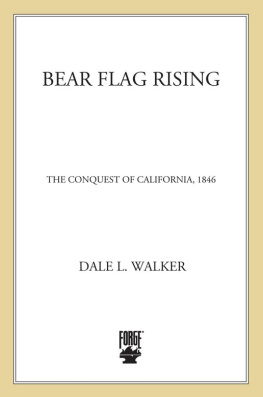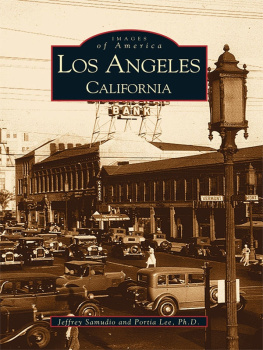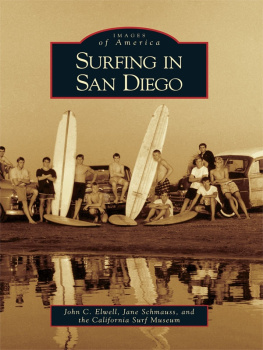

Barakaldo Books 2020, all rights reserved. No part of this publication may be reproduced, stored in a retrieval system or transmitted by any means, electrical, mechanical or otherwise without the written permission of the copyright holder.
Publishers Note
Although in most cases we have retained the Authors original spelling and grammar to authentically reproduce the work of the Author and the original intent of such material, some additional notes and clarifications have been added for the modern readers benefit.
We have also made every effort to include all maps and illustrations of the original edition the limitations of formatting do not allow of including larger maps, we will upload as many of these maps as possible.
A CONCISE HISTORY OF THE MORMON BATTALION
IN THE MEXICAN WAR1846-1847
BY
SERGEANT DAN
TABLE OF CONTENTS
Contents
PREFACE.
After a lapse of thirty-six years from the time of the enlistment of the Mormon Battalion, no apology is required for publishing its history. Had its publication been undertaken at an earlier date, it might have been accomplished more satisfactorily to all concerned, as many important and interesting facts and incidents have doubtless been buried with the departed veterans. However, the most sanguine expectations of the author have been realized in the data collected for compiling this history, consisting of diaries written during service and numerous letters and statements from surviving members of that valiant corps.
Neither labor, pains nor expense has been spared in the effort to make this a just and authentic history. The author has not aimed at sensational effect, nor made any attempt at literary embellishment, but rather endeavored to offer a plain statement of facts and give due credit to all concerned.
Should his efforts meet the approval of his intelligent readers, his highest ambition in the publication of this work will be attained.
D. T.
INTRODUCTORY.
BEFORE entering upon the History of the Mormon Battalion, it seems necessary to offer some explanation of the previous condition of the Latter-day Saints; otherwise the reader unacquainted with those facts would scarcely be able to appreciate the situation of the people at the time of the enlistment of the Battalion.
The following sketch, written by President John Taylor, many years since, gives an excellent idea of affairs previous to the exodus of the Saints from Illinois. It is therefore republished here by the kind permission of the author. As stated in the context, it was written at a time when documentary evidence was not available; it has, however, been since revised and compared with authentic data, and may be relied upon as true in every particular.
The historical address of General Thomas L. Kane, also inserted in this same connection, depicts in graphic terms some scenes of which he was a witness when the Saints fled from their homes in Nauvoo to journey into the wilderness.
THE MARTYRDOM OF JOSEPH SMITH.
BY PRESIDENT JOHN TAYLOR.
BEING requested by Elders George A. Smith and Wilford Woodruff, Church historians, to write an account of events that transpired before, and took place at, the time of the martyrdom of Joseph Smith, in Carthage jail, in Hancock County, State of Illinois, I write the following, principally from memory, not having access at this time to any public documents relative thereto farther than a few desultory items contained in Fords; History of Illinois. I must also acknowledge myself considerably indebted to George A. Smith, who was with me when I wrote it, and who, although not there at the time of the bloody transaction, yet, from conversing with several persons who were in the capacity of Church historians, and aided by an excellent memory, has rendered me considerable service.
These and the few items contained in the note at the end of this account are all the aid I have had. I would farther add that the items contained in the letter, in relation to dates especially, may be considered strictly correct.
After having written the whole, I read it over to the Hon. J. M. Bernhisel, who with one or two slight alterations, pronounced it strictly correct. Brother Bernhisel was present most of the time. I am afraid that, from the length of time that has transpired since the occurrence, and having to rely almost exclusively upon my memory, there may be some slight inaccuracies, but I believe that in the general it is strictly correct. As I figured in those transactions from the commencement to the end, they left no slight impression on my mind.
In the year 1844, a very great excitement prevailed in some parts of Hancock, Brown, and other neighboring Counties of Illinois, in relation to the Mormons, and a spirit of vindictive hatred and persecution was exhibited among the people, which was manifested in the most bitter and acrimonious language, as well as by acts of hostility and violence, frequently threatening the destruction of the citizens of Nauvoo and vicinity, and utter annihilation of the Mormons and Mormonism, and in some instances breaking out in the most violent acts of ruffianly barbarity. Persons were kidnapped, whipped, persecuted, and falsely accused of various crimes; their cattle and houses injured, destroyed, or stolen; vexatious prosecutions were instituted to harass, and annoy. In some remote neighborhoods they were expelled from their homes without redress, and in others violence was threatened to their persons and property, while in others every kind of insult and indignity were heaped upon them, to induce them to abandon their homes, the County, or the State.
These annoyances, prosecutions, and persecutions were instigated through different agencies and by various classes of men, actuated by different motives, but all uniting in the one objectprosecution, persecution, and extermination of the Saints.
There were a number of wicked and corrupt men living in Nauvoo and its vicinity, who had belonged to the Church, but whose conduct was incompatible with the gospel; they were accordingly dealt with by the Church and severed from its communion. Some of these had been prominent members, and held official stations either in the city or Church. Among these were John C. Bennett, formerly mayor; William Law, Counselor to Joseph Smith; Wilson Law, his natural brother, and general in the Nauvoo Legion; Dr. R. D. Foster, a man of some property, but with a very bad reputation; Francis and Chauncey Higbee, the latter a young lawyer, and both sons of a respectable and honored man in the Church, known as Judge Elias Higbee, who died about twelve months before.
Besides these, there were a great many apostates, both in the city and county, of less notoriety, who for their delinquencies, had been expelled from the Church. John C. Bennett and Francis and Chauncey Higbee were cut off from the Church; the former was also cashiered from his generalship for the most flagrant acts of seduction and adultery; and the developments in their cases were so scandalous that the High Council, before whom they were tried, had to sit with closed doors.
William Law, although Counselor to Joseph, was found to be his most bitter foe and maligner, and to hold intercourse, contrary to all law, in his own house, with a young lady resident with him; and it was afterwards proven that he had conspired with some Missourians to take Joseph Smiths life, and was only saved by Josiah Arnold and Daniel Garn, who, being on guard at his house, prevented the assassins from seeing him. Yet, although having murder in his heart, his manners were generally courteous and mild, and he was well calculated to deceive.
Next page











